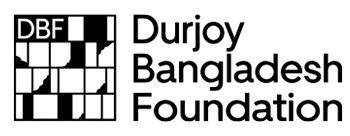This 1978 watercolor painting by Hamiduzzaman Khan captures a scene in the daily life of rural Bangla. With this wet in wet, wash, and lifting painting and neutral color palette he created a semi-realistic approach to capture the landscape of Bangladesh. Wetlands, village house, dark cloudy sky, rural panorama, and his undying love for his country make the painting come to life.
Mostly famous for his historical sculptures, Hamiduzzaman khan takes a step back to admire the serenity of the land that is his home.

Hamiduzzaman Khan
Hamiduzzaman Khan, a Bangladeshi artist, and sculptor was born in 1946 in the village Sahasram in Kishoreganj. His early education was in his native village schools and he completed matriculation in 1962. He then got admitted to the erstwhile East Pakistan College of Arts and Crafts (now Faculty of Fine Arts, University of Dhaka). He received a Bachelor of Fine Arts degree in 1967 from the Department of Painting and Drawing. He later received a master’s degree from the M S University of Baroda, India, in 1976. Before focusing on sculpture, Khan supplemented his income through watercolor paintings. He joined the Department of Sculpture, the University of Dhaka as a lecturer in August 1970.
Hamiduzzaman Khan married Ivy Zaman, an artist and sculptor, in 1976.
He received the Best Sculptor’s Award at the exhibition for his sculpture ‘’Dorja (door)’’. It portrayed the image of a house-door with a martyred figure lying on the doorstep.
He was given the Prime Minister’s Award for Beautification of Dhaka City and the Ekushey Padak in 2006.
Untitled

Artist Art Style
Hamiduzzaman Khan is a well-known sculptor and painter. The Bangladesh War of Liberation, birds, human face, human figure, and natural objects, binding together personal experiences and historical references were his main inspiration behind work.
Bronze and steel are frequently used in his sculptures. He also worked with stone, aluminum, white granite, marble, and mixed-media. In hjis large-scale works he mainly used concrete and bronze. Though the majority of his early sculptures were built in the expressionist style, his works after 2000 reflect minimalism with constant exploration for purity of forms and material. The composition of his sculptures is characterized by architectural and geometric shapes. The war remembrance theme continued in Khan from 1985 till 1988, in different styles. In the mid-1980s he produced some faces and masks that depicted the tortured faces of the Bengali women. His watercolor and acrylic paintings predominantly delineate landscape and natural elements, in particular, wetlands, birds, rural panorama, greenery, cloudy sky, deep forest, and hills. Many of his paintings bear sculptural attributes.
